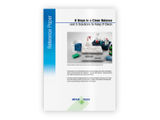To use all functions of this page, please activate cookies in your browser.
my.chemeurope.com
With an accout for my.chemeurope.com you can always see everything at a glance – and you can configure your own website and individual newsletter.
- My watch list
- My saved searches
- My saved topics
- My newsletter
Wilhelmus Zakaria JohannesWilhelmus Zakaria Johannes (Rote Island, East Nusa Tenggara, 1895–Netherlands, September 4, 1952) was an Indonesian radiology doctor. Johannes was the first Indonesian medical doctor who learned radiology in Holland[citation needed] and then became an expert in Rontgen technology and had contributed a lot to the development of medical studies in Indonesia. The Indonesian government honored WZ Johannes as a National Hero of Indonesia and named a general hospital in Kupang, East Nusa Tenggara after him. As a tribute, the name Wilhelmus Zakaria Johannes was used on an Indonesian Navy ship, the KRI Wilhelmus Zakaria Johannes. Johannes died in 1952 and was buried at the Jati Petamburan Cemetery in Central Jakarta. Additional recommended knowledgeWZ Johannes was the cousin of Professor Herman Johannes, an Indonesian professor who was the Rector of Gadjah Mada University and father of Helmi Johannes, a newscaster and executive producer for VOA Indonesian television in Washington DC. |
| This article is licensed under the GNU Free Documentation License. It uses material from the Wikipedia article "Wilhelmus_Zakaria_Johannes". A list of authors is available in Wikipedia. |
- Essential_amino_acid
- Recyclage des piles : 70% du lithium récupéré - Développement d'un procédé de recyclage mécanochimique bon marché et respectueux de l'environnement
- 2-Phenylphenol
- Nanosphere at the quantum limit - Sensors could be immensely improved with nanospheres
- Kore Technology Ltd - Cambridge, United Kingdom






